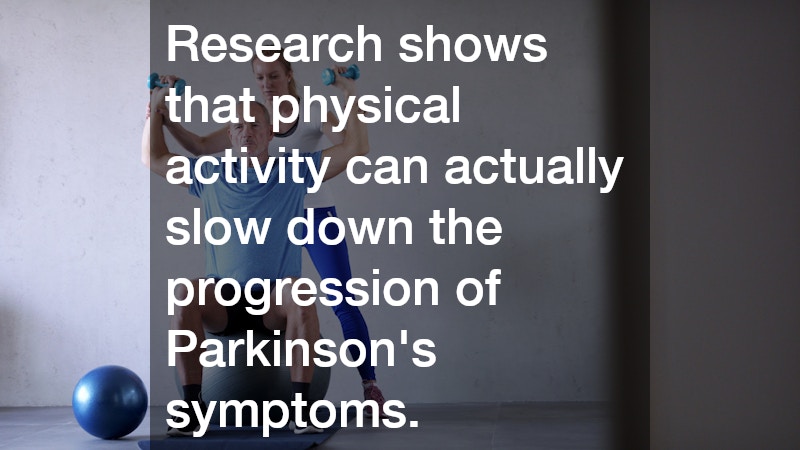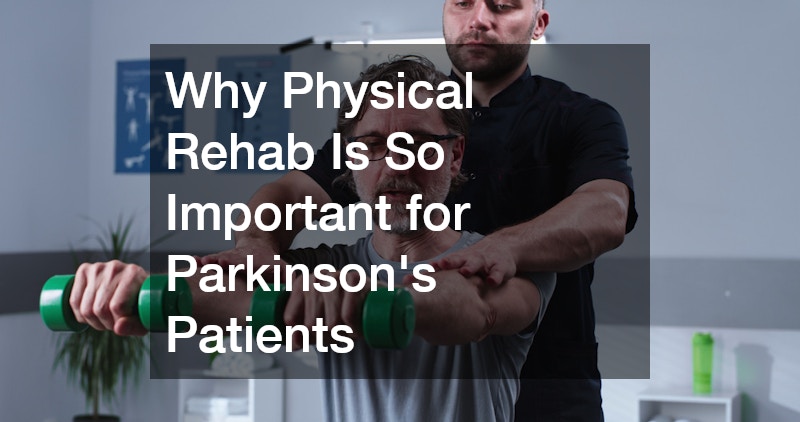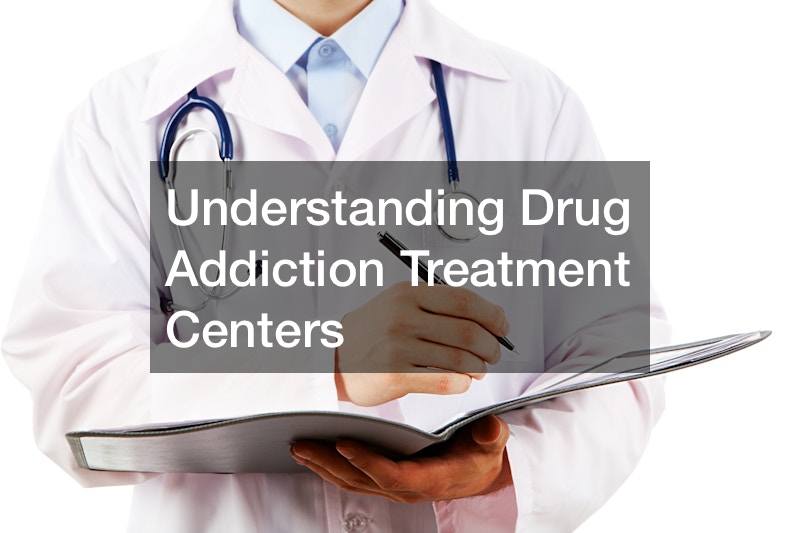
Parkinson’s disease is a progressive neurological disorder that affects movement and coordination. It primarily results from the loss of dopamine-producing neurons in the brain. Symptoms often start gradually and can include tremors, stiffness, and problems with balance and coordination. As the disease progresses, these symptoms can become more severe, affecting a patient’s ability to perform everyday activities. Understanding the nature of Parkinson’s is crucial because it underscores the importance of comprehensive care, including physical rehabilitation.
While there is currently no cure for Parkinson’s, there are treatment options available that can help manage symptoms. These treatments often involve medications, but physical rehabilitation also plays a crucial role. A well-structured rehabilitation program can help maintain mobility and improve the quality of life for individuals living with the disease. The rehab center offers specialized programs that focus on the specific needs of Parkinson’s patients, providing tailored physical exercises that support their unique health requirements. Together, these treatment modalities aim to provide holistic care that addresses both the physical and psychological needs of patients.
Research shows that physical activity can actually slow down the progression of Parkinson’s symptoms. Regular movement and exercise enhance neuroplasticity, or the brain’s ability to adapt and form new connections, which is key in managing the disease. By incorporating regular exercise into their routine, patients can improve their cardiovascular health, maintain flexibility, and enhance muscle strength. These benefits make physical rehabilitation an essential component of Parkinson’s treatment plans. Rehab centers are equipped with the professionals and resources needed to implement and guide these effective programs for Parkinson’s patients.
The Role of Physical Rehabilitation in Treatment
Physical rehabilitation serves as a cornerstone in the management of Parkinson’s disease. It focuses on exercises designed to improve balance, flexibility, and muscle strength. Specific exercise regimens can help to mitigate some of the movement difficulties experienced by Parkinson’s patients. Physical therapists work closely with individuals to create customized programs that target their specific symptoms and goals. This personalized approach ensures that each patient receives the level of care necessary to maximize their physical capabilities and independence.
Rehab centers offer a supportive environment where Parkinson’s patients can engage in physical activities under professional supervision. These centers are staffed with experts who understand the complexities of the disease and can adjust exercise routines according to each patient’s progress. In addition to physical benefits, these activities can also offer psychological advantages, such as improved mood and reduced anxiety. The social aspect of group exercises in rehab settings can foster a sense of community, helping patients feel less isolated in their journey. This holistic approach to rehabilitation can significantly enhance the overall quality of life for Parkinson’s patients.
Moreover, rehabilitation programs in professional settings help to establish consistent routines, which are vital for Parkinson’s patients. Structured schedules ensure that patients regularly engage in physical activities, optimizing the therapeutic benefits of exercise. Rehab centers utilize various techniques, such as targeted exercises, balance training, and gait analysis, to address the diverse needs of individuals with Parkinson’s. Such interventions not only focus on immediate symptom relief but also aim to improve long-term outcomes. By working with professionals at a rehab center, Parkinson’s patients can achieve a greater sense of control over their condition.
Holistic Benefits of Rehab Centers for Parkinson’s Patients
The multifaceted advantages of physical rehabilitation extend beyond mere symptom management for Parkinson’s patients. Holistic rehabilitation encompasses a range of therapies that address both physical and mental health needs. At a rehab center, patients have access to a variety of services, including occupational therapy, speech therapy, and nutritional guidance. These complementary therapies can play a pivotal role in enhancing overall well-being. By focusing on multiple aspects of health, rehab centers offer comprehensive care that can significantly improve life satisfaction and daily functioning for Parkinson’s patients.
Occupational therapy, for example, helps patients maintain their independence in daily activities. Through adaptive techniques and tools, occupational therapists work to modify tasks to accommodate the challenges posed by Parkinson’s. Similarly, speech therapy can assist patients in managing speech and swallowing difficulties. These therapies are critical, as they address symptoms that commonly impact the day-to-day lives of Parkinson’s patients. By integrating these services, rehab centers provide an all-encompassing approach that supports both the physical and cognitive health of individuals with Parkinson’s.
Psychologically, engaging in consistent physical activity at a rehab center can alleviate feelings of depression and anxiety, which are prevalent among Parkinson’s patients. Exercise triggers the release of endorphins, enhancing mood and providing emotional relief. The supportive environment and sense of community at rehab centers contribute to mental well-being, as patients find encouragement and motivation from peers and staff. This support network is invaluable, offering patients emotional resilience and strength. By adopting a holistic approach to rehabilitation, patients can experience improvements across all facets of their health.
Integrating Physical Rehabilitation into Long-Term Care
To ensure the long-term benefits of physical rehabilitation for Parkinson’s patients, it is essential to integrate these practices into regular care routines. Consistent participation in rehab programs aids in sustaining mobility and preventing decline. The support of professional caregivers and therapists can facilitate ongoing motivation and adherence to rehabilitation regimens. As Parkinson’s disease progresses, continuous adaptation of exercise routines is necessary to meet changing needs. Rehab centers play a critical role in guiding these adjustments and updating care plans to reflect the evolving condition of each patient.
In addition, family involvement in the rehabilitation process can significantly enhance outcomes. Educating family members about the importance of physical rehabilitation helps reinforce practices outside the rehab center. Families play a crucial role in supporting the patient’s commitment to exercise and encouraging continued participation in rehab programs. Through family involvement, patients receive a greater level of care and encouragement, contributing to their overall success in managing Parkinson’s. As partners in health, families and rehab centers work together to provide comprehensive support.
It’s important to recognize that physical rehabilitation should be viewed as a long-term commitment rather than a short-term solution. By maintaining an active lifestyle honed through ongoing rehab, Parkinson’s patients can enjoy improved mobility and a greater sense of autonomy. Constant encouragement and reinforcement from rehab centers ensure that physical exercise remains a core component of treatment. This dedication to rehabilitation extends beyond the physical aspects, promoting a balanced approach to managing the complexities of Parkinson’s disease. Ultimately, the integration of rehabilitation into long-term care empowers Parkinson’s patients to live more fulfilling lives.




